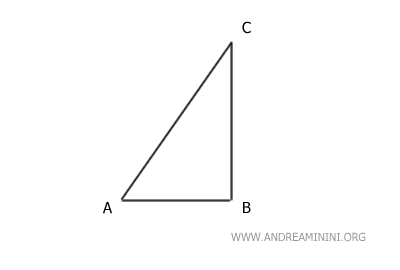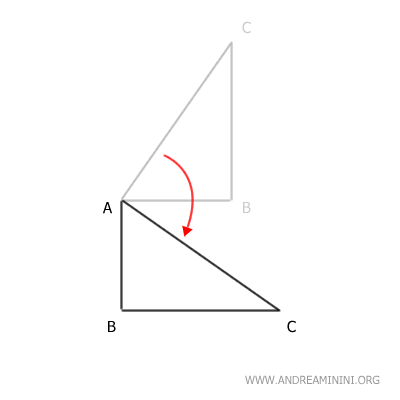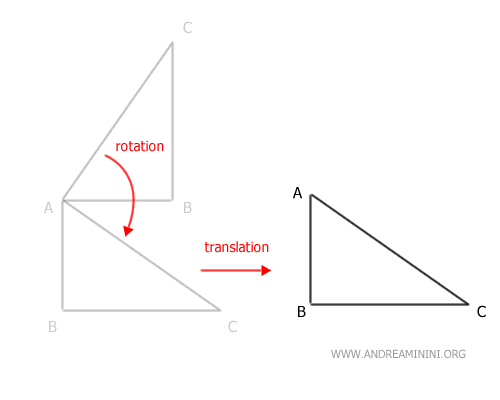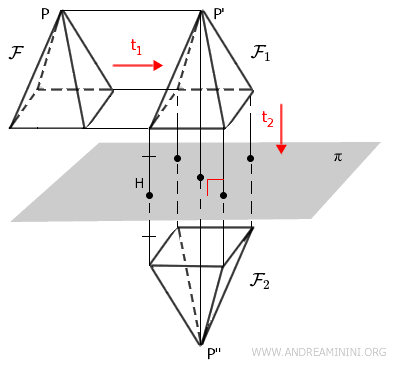Composing Geometric Transformations
Composing geometric transformations means applying two or more transformations in a sequence to the same object. $$ s \circ t $$
It is read as "s composed with t", where t is the first transformation applied, followed by s. Therefore, composition is interpreted from right to left.
A Practical Example
For example, let's start with an initial geometric figure.

First, we apply a 90° rotation around the center of rotation, point A.

Next, we apply the second transformation to the result. For instance, a translation along the segment AB.

The final outcome is the composition of these two geometric transformations.
Note: A geometric transformation changes a figure according to specific rules, without altering certain fundamental properties. Examples of geometric transformations include translations, rotations, reflections, and dilations.
It's important to note that the composition of geometric transformations is not commutative.
Therefore, the order in which the transformations are applied is crucial, as it can greatly influence the final result.
Composing Transformations in Space
Geometric transformations can also be combined when applied to solid figures in space.
When I apply a geometric transformation to a figure, it produces a new transformed shape. If I then apply another transformation to this new shape, I get a final transformed figure.
Example
Let's start with a solid figure in space, \( \mathcal{F} \), such as a square-based pyramid. First, I apply a translation, which I'll call transformation \( t_1 \). This results in a new solid, \( \mathcal{F}_1 \).
Next, I apply a reflection across a plane as the second transformation, \( t_2 \), producing yet another transformed solid, \( \mathcal{F}_2 \).

This sequence of transformations is an example of a composite transformation, \( t_2 \circ t_1 \), where \( t_1 \) is applied first, followed by \( t_2 \).
Rather than performing each step separately, I can directly apply the composite transformation \( t_2 \circ t_1 \) to the original solid \( \mathcal{F} \), arriving at the final shape \( \mathcal{F}_2 \).
Note: In three-dimensional space, the order of geometric transformations matters, as composition is generally not commutative. In other words, applying two transformations in a different order can lead to entirely different results.
And so on.
